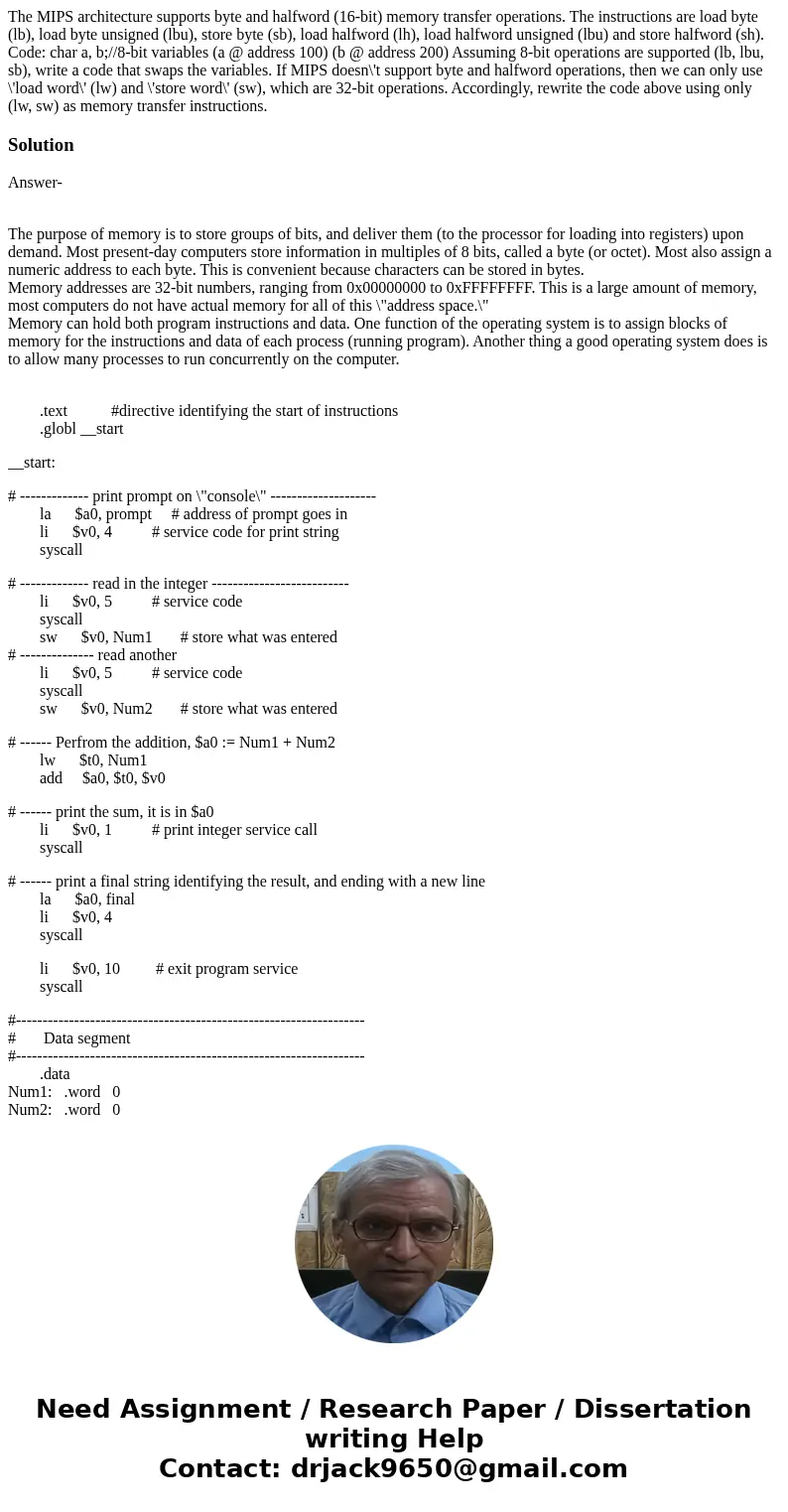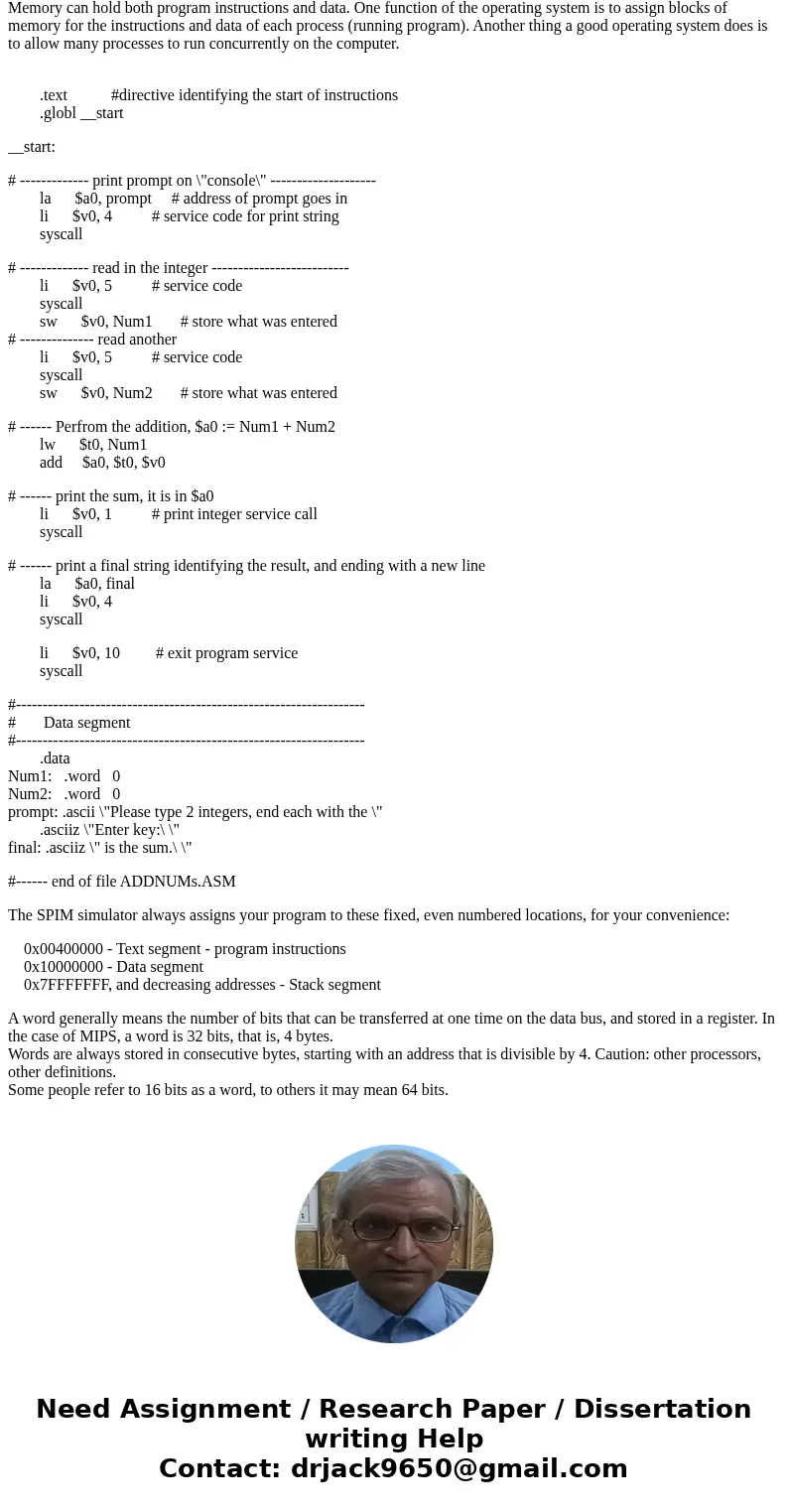The MIPS architecture supports byte and halfword 16bit memor
Solution
Answer-
The purpose of memory is to store groups of bits, and deliver them (to the processor for loading into registers) upon demand. Most present-day computers store information in multiples of 8 bits, called a byte (or octet). Most also assign a numeric address to each byte. This is convenient because characters can be stored in bytes.
Memory addresses are 32-bit numbers, ranging from 0x00000000 to 0xFFFFFFFF. This is a large amount of memory, most computers do not have actual memory for all of this \"address space.\"
Memory can hold both program instructions and data. One function of the operating system is to assign blocks of
memory for the instructions and data of each process (running program). Another thing a good operating system does is to allow many processes to run concurrently on the computer.
.text #directive identifying the start of instructions
.globl __start
__start:
# ------------- print prompt on \"console\" --------------------
la $a0, prompt # address of prompt goes in
li $v0, 4 # service code for print string
syscall
# ------------- read in the integer --------------------------
li $v0, 5 # service code
syscall
sw $v0, Num1 # store what was entered
# -------------- read another
li $v0, 5 # service code
syscall
sw $v0, Num2 # store what was entered
# ------ Perfrom the addition, $a0 := Num1 + Num2
lw $t0, Num1
add $a0, $t0, $v0
# ------ print the sum, it is in $a0
li $v0, 1 # print integer service call
syscall
# ------ print a final string identifying the result, and ending with a new line
la $a0, final
li $v0, 4
syscall
li $v0, 10 # exit program service
syscall
#------------------------------------------------------------------
# Data segment
#------------------------------------------------------------------
.data
Num1: .word 0
Num2: .word 0
prompt: .ascii \"Please type 2 integers, end each with the \"
.asciiz \"Enter key:\ \"
final: .asciiz \" is the sum.\ \"
#------ end of file ADDNUMs.ASM
The SPIM simulator always assigns your program to these fixed, even numbered locations, for your convenience:
0x00400000 - Text segment - program instructions
0x10000000 - Data segment
0x7FFFFFFF, and decreasing addresses - Stack segment
A word generally means the number of bits that can be transferred at one time on the data bus, and stored in a register. In the case of MIPS, a word is 32 bits, that is, 4 bytes.
Words are always stored in consecutive bytes, starting with an address that is divisible by 4. Caution: other processors, other definitions.
Some people refer to 16 bits as a word, to others it may mean 64 bits.


 Homework Sourse
Homework Sourse